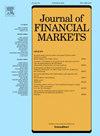盈利能力异常和总波动风险
IF 2.1
2区 经济学
Q2 BUSINESS, FINANCE
引用次数: 0
摘要
盈利能力较低的公司的预期回报率较低,因为当市场波动加剧时,这些公司的表现好于预期。之所以出现好于预期的业绩,是因为无利可图的公司处于困境和波动之中,它们的股权类似于资产的看涨期权,而看涨期权的价值随着波动而增加,其他都是固定的。与这一假设一致,对于陷入困境和波动较大的公司来说,盈利异常及其对总波动风险的敞口更强;对于这类公司来说,总波动性风险解释了大约一半的盈利异常,而在单一类别的盈利能力中,大约70%的异常被解释。本文章由计算机程序翻译,如有差异,请以英文原文为准。
Profitability anomaly and aggregate volatility risk
Firms with lower profitability have lower expected returns because such firms perform better than expected when market volatility increases. The better-than-expected performance arises because unprofitable firms are distressed and volatile, their equity resembles a call option on the assets, and call options value increases with volatility, all else fixed. Consistent with this hypothesis, the profitability anomaly and its exposure to aggregate volatility risk are stronger for distressed and volatile firms; for such firms, aggregate volatility risk explains roughly half of the profitability anomaly, while in single sorts on profitability about 70% of the anomaly is explained.
求助全文
通过发布文献求助,成功后即可免费获取论文全文。
去求助
来源期刊

Journal of Financial Markets
BUSINESS, FINANCE-
CiteScore
3.40
自引率
3.60%
发文量
64
期刊介绍:
The Journal of Financial Markets publishes high quality original research on applied and theoretical issues related to securities trading and pricing. Area of coverage includes the analysis and design of trading mechanisms, optimal order placement strategies, the role of information in securities markets, financial intermediation as it relates to securities investments - for example, the structure of brokerage and mutual fund industries, and analyses of short and long run horizon price behaviour. The journal strives to maintain a balance between theoretical and empirical work, and aims to provide prompt and constructive reviews to paper submitters.
 求助内容:
求助内容: 应助结果提醒方式:
应助结果提醒方式:


